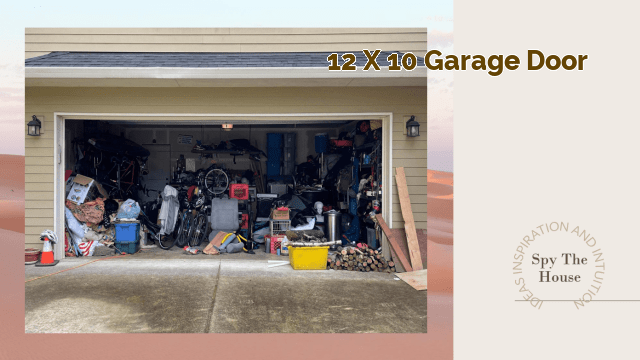Low Ceiling Garage Door Opener: Everything You Need to Know
If you have a low ceiling in your garage, finding a garage door opener that fits can be a challenge. Having a garage door opener that doesn’t fit can be frustrating and even dangerous. In this article, we’ll discuss everything you need to know about low ceiling garage door openers, including what they are, how they work, and what to look for when choosing one.
What is a Low Ceiling Garage Door Opener?
A low ceiling garage door opener is a type of garage door opener that is designed to fit in garages with low ceilings. These openers are usually smaller and more compact than traditional garage door openers, and they’re designed to be mounted on the ceiling to save space.
One of the main features of a low ceiling garage door opener is its low profile design. This means that the opener is designed to be as close to the ceiling as possible, which is ideal for garages with low ceilings. These openers are also designed to be lightweight and easy to install, which makes them a popular choice for homeowners who want to install their own garage door opener.
How Does a Low Ceiling Garage Door Opener Work?
A low ceiling garage door opener works in much the same way as a traditional garage door opener. The opener is mounted on the ceiling and connected to the garage door with a track. When you press the button on your remote or wall control, the opener activates a motor that moves the garage door up or down along the track.
One of the main differences between a low ceiling garage door opener and a traditional garage door opener is the way it’s mounted. Because of the low profile design, these openers are mounted higher up on the ceiling than traditional openers. This means that the track is usually shorter, which can save space in your garage.
What to Look for When Choosing a Low Ceiling Garage Door Opener
When choosing a low ceiling garage door opener, there are a few things to keep in mind. First, you’ll want to look for an opener that is designed specifically for low ceilings. This will ensure that the opener is the right size and weight for your garage.
Next, you’ll want to consider the motor and horsepower of the opener. The motor is what powers the opener and moves the garage door up and down. The horsepower of the motor will determine how quickly and smoothly the door opens and closes. For most residential garages, a ½ horsepower motor is sufficient.
You’ll also want to consider the type of drive system the opener uses. There are three main types of drive systems: chain drive, belt drive, and screw drive. Chain drive openers are the most common and are usually the most affordable. Belt drive openers are quieter than chain drive openers but are usually more expensive. Screw drive openers are the least common and are usually the most expensive.
Benefits of a Low Ceiling Garage Door Opener
There are several benefits to using a low ceiling garage door opener. First, these openers are designed to save space in your garage. By mounting the opener higher up on the ceiling, you can free up valuable space in your garage for storage or other activities.
Second, low ceiling garage door openers are usually more affordable than traditional openers. This is because they’re smaller and more compact, which means they require less material to manufacture.
Finally, low ceiling garage door openers are usually easier to install than traditional openers. Because they’re smaller and lighter, they’re easier to maneuver and mount on the ceiling. This means that you can install the opener yourself without the need for professional help, which can save you money on installation costs.
Installation of a Low Ceiling Garage Door Opener
Installing a low ceiling garage door opener is a relatively simple process that can be done by most homeowners. However, it’s important to follow the manufacturer’s instructions carefully to ensure that the opener is installed correctly and safely.
Before you begin the installation process, you’ll need to measure the height of your garage ceiling to make sure that the opener will fit. You’ll also need to make sure that the ceiling is strong enough to support the weight of the opener and the garage door.
Once you’ve confirmed that your garage is suitable for a low ceiling garage door opener, you can begin the installation process. This usually involves mounting the opener on the ceiling, installing the track and drive system, and connecting the opener to the garage door.
It’s important to follow the manufacturer’s instructions carefully and to use the right tools and hardware for the job. If you’re not comfortable installing the opener yourself, you can always hire a professional to do it for you.
Conclusion
A low ceiling garage door opener is an excellent choice for homeowners with low ceilings in their garages. These openers are designed to save space, are usually more affordable than traditional openers, and are easier to install. When choosing a low ceiling garage door opener, make sure to look for an opener that is designed specifically for low ceilings and to consider the motor, horsepower, and drive system.
People Also Ask
What is the minimum height for a garage door opener?
According to most manufacturers, the minimum height for a garage door opener is 7 feet. However, if you have a low ceiling in your garage, you may need to look for an opener that is designed specifically for low ceilings.
Can I install a low ceiling garage door opener myself?
Yes, most homeowners can install a low ceiling garage door opener themselves. However, it’s important to follow the manufacturer’s instructions carefully and to use the right tools and hardware for the job. If you’re not comfortable installing the opener yourself, you can always hire a professional to do it for you.
What is the difference between a chain drive and a belt drive garage door opener?
The main difference between a chain drive and a belt drive garage door opener is the type of drive system they use. Chain drive openers use a metal chain to move the garage door up and down, while belt drive openers use a rubber belt. Belt drive openers are usually quieter than chain drive openers but are usually more expensive.






